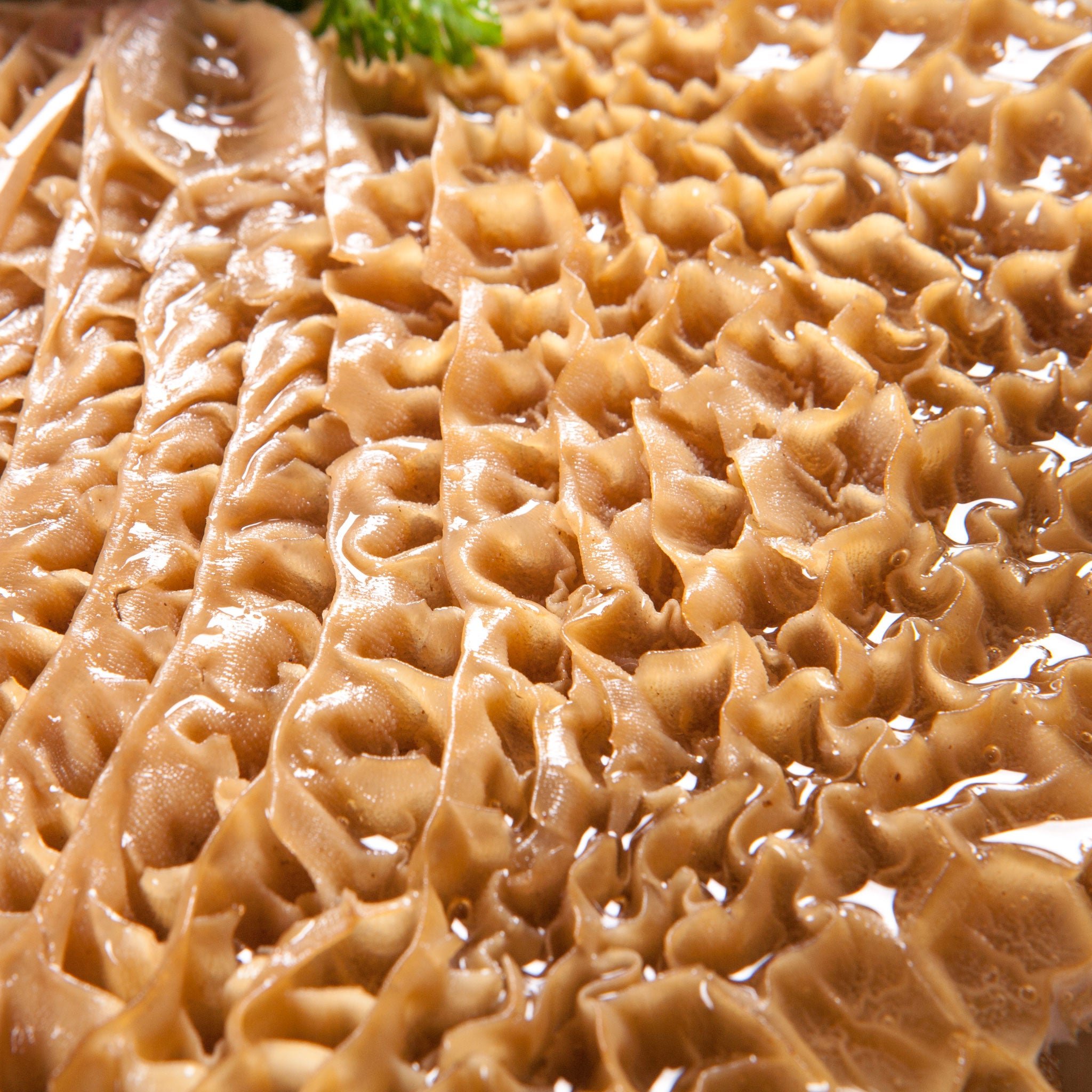Exploring What Is Honeycomb Tripe: A Culinary Guide

Honeycomb tripe, also known as beef tripe, is a unique delicacy celebrated for its distinct texture and flavor. Derived from the lining of a cow’s stomach, this culinary gem has been cherished in various cuisines worldwide. Despite its unconventional origin, honeycomb tripe offers a delectable experience when prepared with care and creativity. Its intricate pattern and chewy consistency make it a versatile ingredient, perfect for absorbing rich sauces and bold seasonings. Whether braised, grilled, or stewed, exploring what honeycomb tripe has to offer can be a delightful culinary adventure waiting to be savored.
The Wonders of Honeycomb Tripe: A Guide to this Unique Ingredient
What is Honeycomb Tripe?
Honeycomb tripe, also known as beef tripe or simply tripe, is a type of edible offal that comes from the stomach lining of cows, sheep, or other ruminant animals. Its name comes from its unique appearance, resembling the hexagonal pattern of a honeycomb. While it may not sound appetizing at first, honeycomb tripe is a versatile and nutritious ingredient that is enjoyed in various culinary traditions around the world.
The Composition of Honeycomb Tripe
Honeycomb tripe is made up of the muscular lining of the stomach of cows or other ruminant animals. It is characterized by its distinct honeycomb-like pattern, which is a result of the intricate network of muscle fibers in the stomach lining. This unique texture makes honeycomb tripe a popular ingredient in many dishes, as it can absorb flavors and seasonings well.
Culinary Uses of Honeycomb Tripe
Honeycomb tripe is a versatile ingredient that is used in a variety of dishes around the world. In many Asian cuisines, such as Chinese and Vietnamese, tripe is commonly used in soups, stews, and stir-fries. Its mild flavor allows it to take on the taste of the other ingredients it is cooked with, making it a great addition to dishes with bold flavors.
In Italian cuisine, tripe is a key ingredient in dishes like Trippa alla Fiorentina, a hearty stew made with tomatoes, onions, and various herbs and spices. In Mexican cuisine, tripe is often used in dishes like menudo, a traditional soup made with tripe, hominy, and chili peppers.
The Nutritional Benefits of Honeycomb Tripe
Despite its reputation as a somewhat unusual ingredient, honeycomb tripe is actually quite nutritious. It is a good source of protein, vitamins, and minerals, including zinc, iron, and B vitamins. Tripe is also low in fat and carbohydrates, making it a healthy option for those looking to boost their protein intake without consuming excessive calories.
Protein Content
Honeycomb tripe is a rich source of high-quality protein, which is essential for building and repairing tissues in the body. Protein is also important for maintaining healthy muscles, bones, and skin. Including tripe in your diet can help ensure that you are getting an adequate amount of this vital nutrient.
Vitamins and Minerals
In addition to protein, honeycomb tripe contains essential vitamins and minerals that are important for overall health. Zinc, for example, plays a key role in immune function and wound healing, while iron is necessary for the production of red blood cells. B vitamins found in tripe are essential for energy metabolism and nerve function.
How to Prepare Honeycomb Tripe
Cooking honeycomb tripe may seem daunting at first, but with the right techniques, it can be transformed into a delicious and tender dish. Before cooking, it is important to thoroughly clean and rinse the tripe to remove any impurities or residues. Some recipes may call for blanching the tripe in boiling water to help tenderize it and remove any excess fat.
Honeycomb tripe can be braised, boiled, stir-fried, or grilled, depending on the dish you are preparing. It is important to cook tripe slowly and at a low temperature to ensure that it becomes tender and flavorful. Tripe can absorb the flavors of the seasonings and ingredients it is cooked with, making it a versatile ingredient in a wide range of dishes.
In conclusion, honeycomb tripe is a unique and versatile ingredient that is enjoyed in various cuisines around the world. Despite its unconventional appearance, tripe offers a range of culinary possibilities and nutritional benefits. Whether you are a seasoned food enthusiast or someone looking to broaden your culinary horizons, exploring the world of honeycomb tripe can be a rewarding experience.
Honeycomb Tripe
Frequently Asked Questions
What is honeycomb tripe?
Honeycomb tripe is a type of edible offal that comes from the lining of the stomach of ruminant animals, such as cattle or sheep. It is characterized by its unique honeycomb-like pattern on the surface, hence the name.
How is honeycomb tripe used in cooking?
Honeycomb tripe is commonly used in various cuisines around the world, where it is often boiled, braised, or stewed to make it tender. It absorbs flavors well, making it popular in soups, stews, and stir-fry dishes.
Is honeycomb tripe nutritious?
Yes, honeycomb tripe is a good source of protein, essential vitamins, and minerals such as iron and zinc. It is low in fat and calories, making it a relatively healthy food choice when prepared without added fats or excessive seasonings.
What does honeycomb tripe taste like?
When cooked properly, honeycomb tripe has a mild flavor with a slightly chewy texture. Its taste can vary depending on the cooking method and the seasonings used, but it generally takes on the flavors of the dish it is prepared in.
Final Thoughts
Honeycomb tripe is a type of edible offal that comes from the lining of a cow’s stomach. It is known for its unique appearance, resembling a honeycomb pattern. Despite its unconventional source, honeycomb tripe is prized in various cuisines for its chewy texture and ability to absorb flavors. Whether it’s stewed in a rich broth or grilled to perfection, honeycomb tripe offers a distinct culinary experience. So, next time you come across a dish featuring honeycomb tripe, don’t be hesitant to give it a try – you might just discover a new favorite!







